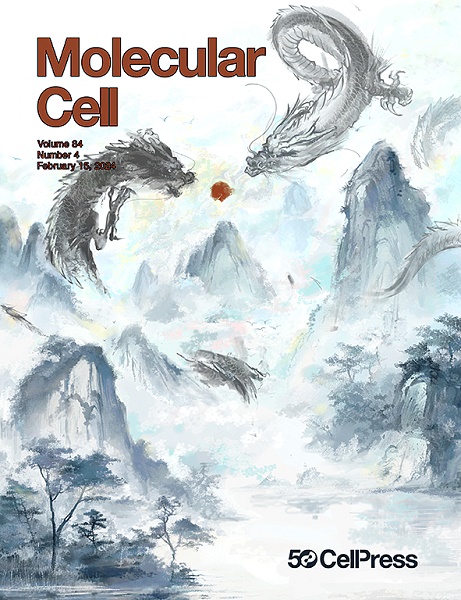Ultrastable and versatile multimeric ensembles of FoxP3 on microsatellites
IF 14.5
1区 生物学
Q1 BIOCHEMISTRY & MOLECULAR BIOLOGY
引用次数: 0
Abstract
Microsatellites are essential genomic components increasingly linked to transcriptional regulation. FoxP3, a transcription factor critical for regulatory T cell (Treg) development, recognizes TTTG repeat microsatellites by forming multimers along DNA. However, FoxP3 also binds a broader range of TnG repeats (n = 2–5), often at the edges of accessible chromatin regions. This raises questions about how FoxP3 adapts to sequence variability and the potential role of nucleosomes. Using cryoelectron microscopy and single-molecule analyses, we show that murine FoxP3 assembles into various distinct supramolecular structures, depending on DNA sequence. This structural plasticity enables FoxP3 to bridge 2–4 DNA duplexes, forming ultrastable structures that coordinate multiple genomic loci. Nucleosomes further facilitate FoxP3 assembly by inducing local DNA bending, creating a nucleus that recruits distal DNA elements through multiway bridging. Our findings thus reveal FoxP3’s unusual ability to shapeshift to accommodate evolutionarily dynamic microsatellites and its potential to reinforce chromatin boundaries and three-dimensional genomic architecture.

微卫星上的 FoxP3 超稳定多功能多聚体组合
本文章由计算机程序翻译,如有差异,请以英文原文为准。
求助全文
约1分钟内获得全文
求助全文
来源期刊

Molecular Cell
生物-生化与分子生物学
CiteScore
26.00
自引率
3.80%
发文量
389
审稿时长
1 months
期刊介绍:
Molecular Cell is a companion to Cell, the leading journal of biology and the highest-impact journal in the world. Launched in December 1997 and published monthly. Molecular Cell is dedicated to publishing cutting-edge research in molecular biology, focusing on fundamental cellular processes. The journal encompasses a wide range of topics, including DNA replication, recombination, and repair; Chromatin biology and genome organization; Transcription; RNA processing and decay; Non-coding RNA function; Translation; Protein folding, modification, and quality control; Signal transduction pathways; Cell cycle and checkpoints; Cell death; Autophagy; Metabolism.
 求助内容:
求助内容: 应助结果提醒方式:
应助结果提醒方式:


